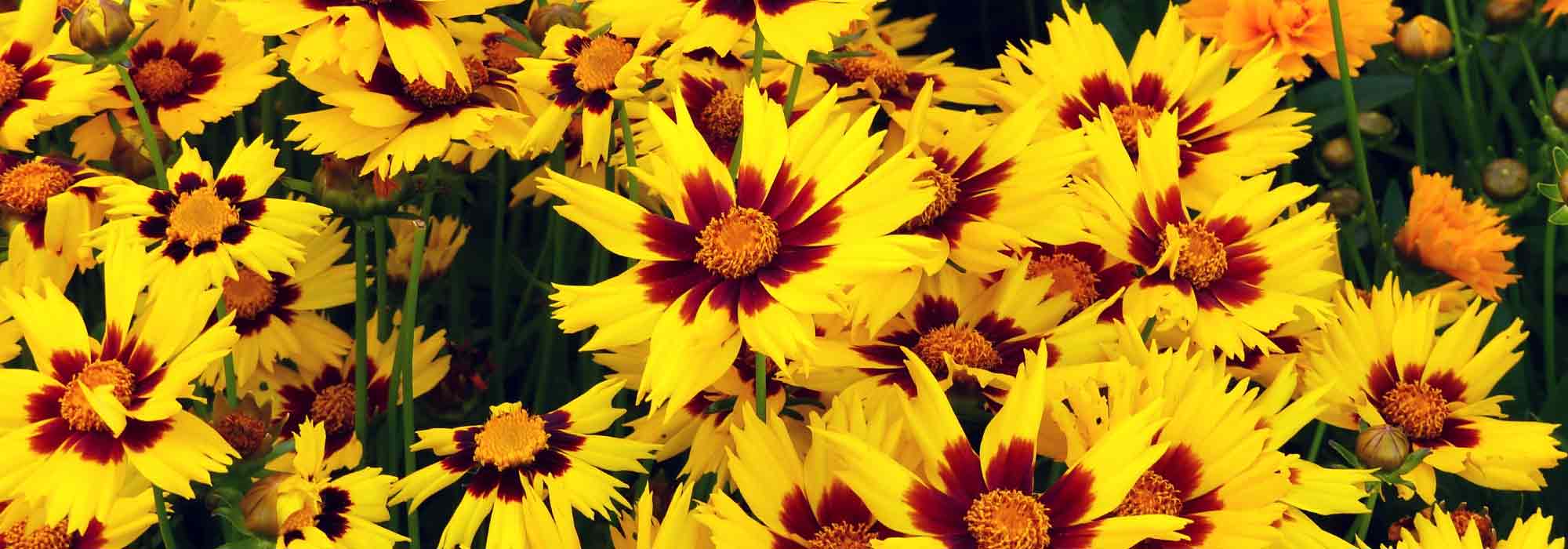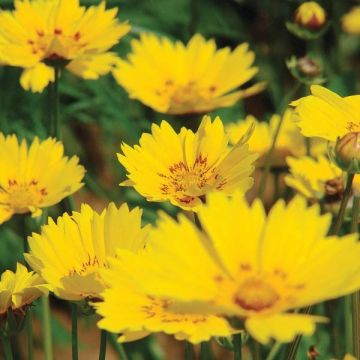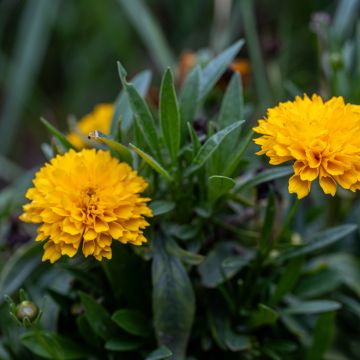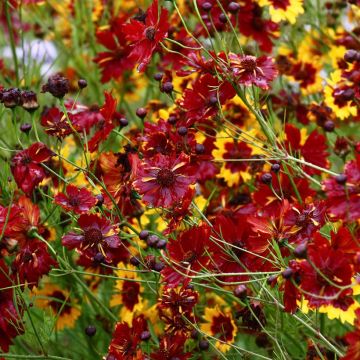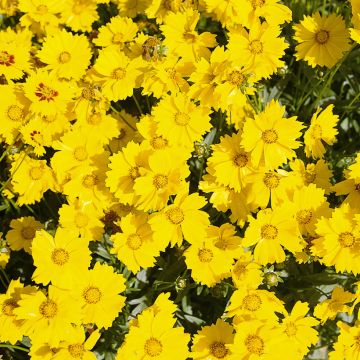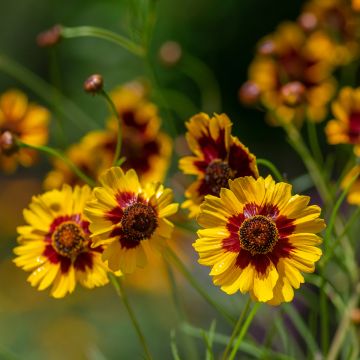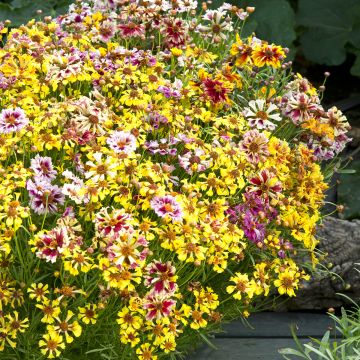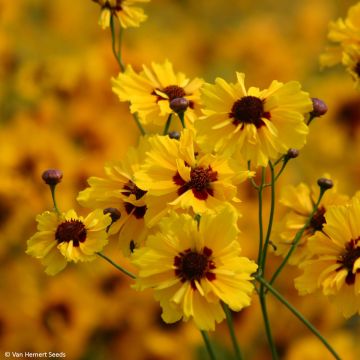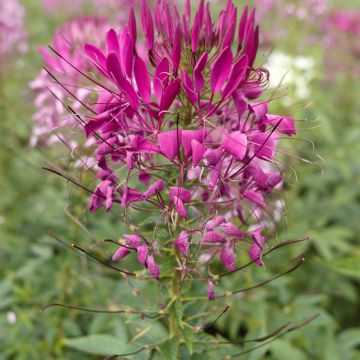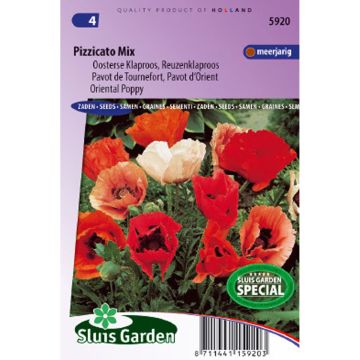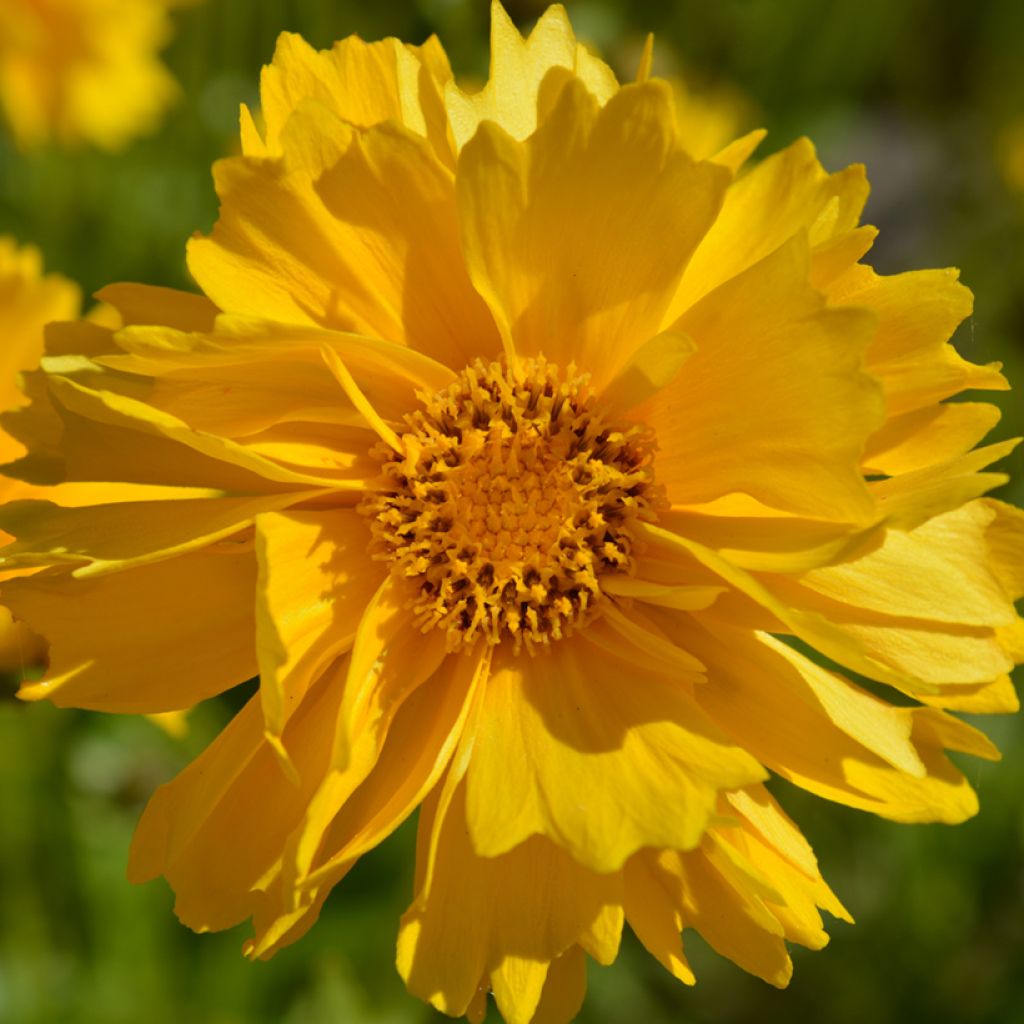

Coreopsis grandiflora Presto Seeds - Tickseed
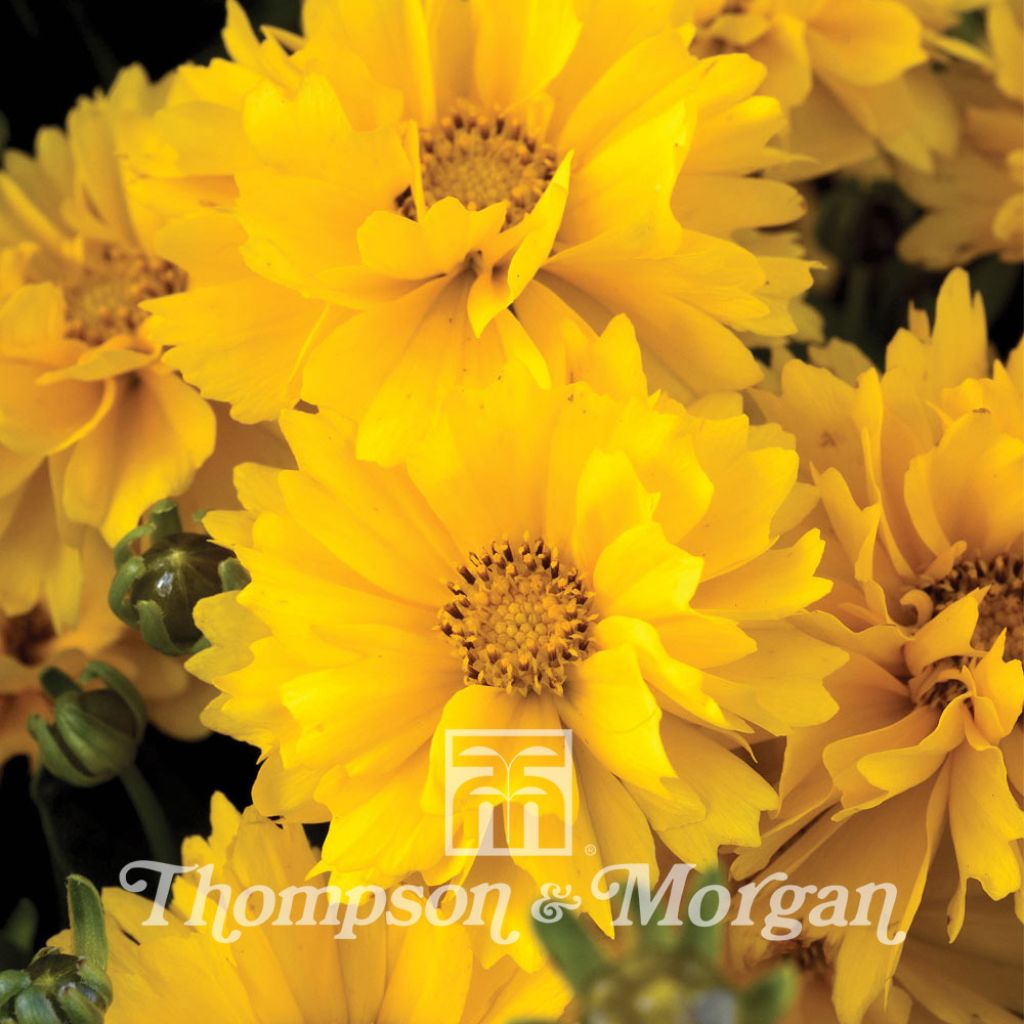

Coreopsis grandiflora Presto Seeds - Tickseed
Coreopsis grandiflora Presto Seeds - Tickseed
Coreopsis grandiflora Presto
Large-flowered Tickseed, Golden Tickseed
Good germination, A plant that withstands the scorching sun and continues to flower despite this year's heatwaves (planted in the ground).
Audrey, 31/08/2025
Special offer!
Receive a €20 voucher for any order over €90 (excluding delivery costs, credit notes, and plastic-free options)!
1- Add your favorite plants to your cart.
2- Once you have reached €90, confirm your order (you can even choose the delivery date!).
3- As soon as your order is shipped, you will receive an email containing your voucher code, valid for 3 months (90 days).
Your voucher is unique and can only be used once, for any order with a minimum value of €20, excluding delivery costs.
Can be combined with other current offers, non-divisible and non-refundable.
Home or relay delivery (depending on size and destination)
Schedule delivery date,
and select date in basket
This plant carries a 6 months recovery warranty
More information
We guarantee the quality of our plants for a full growing cycle, and will replace at our expense any plant that fails to recover under normal climatic and planting conditions.

Would this plant suit my garden?
Set up your Plantfit profile →
Description
The dwarf, large-flowered tickseed 'Presto' is a perennial plant belonging to the group of Coreopsis grandiflora, which normally consists of medium to tall varieties (45 to 90 cm). This variety is the result of a long process of selection based on the size of the plant and the speed of the onset of flowering. The dwarf and compact habit of this variety (20 cm high) makes it suitable for flowerbed borders, rock gardens, containers on the terrace and window boxes on the balcony. Unlike most perennial varieties of Coreopsis, this variety flowers from the first year from seed.
It is also a perennial plant that is distinguished for the abundance and quality of its golden yellow flowers. The flowers, 6 cm across, are semi-double to double and repeat bloom from June to the end of August.
The dark green foliage forms a small compact mound of lanceolate leaves.
These exceptional attributes led to this plant being awarded the Fleuroselect Gold Medal in 2007.
In the garden, provide it with a sunny location and rich, well-drained soil.
Eco-gesture :
By sowing Coreopsis in your garden, you will attract pollinating insects and other useful insects that will be lured by the smell of the nectar emanating from their flowers. In this way, you can improve the quality of your garden's ecosystem which is very important for improving fruit and vegetable harvests. So be sure to plant a few Coreopsis close to your vegetable garden.
Flowering
Foliage
Plant habit
Botanical data
Coreopsis
grandiflora
Presto
Asteraceae
Large-flowered Tickseed, Golden Tickseed
Cultivar or hybrid
Other Coreopsis seeds
View all →Planting and care
Sow the Coreopsis in February-March, in a seed tray. Use good quality soil, possibly enriched with garden compost. Broadcast sow your seeds. Cover the seeds with a fine sprinkling of compost or vermiculite, tamp down lightly and water generously with a fine spray. Place your pots in a bright spot without direct sunlight, at a temperature of 20 to 25° C.
Seed emergence will take 21 to 30 days. As soon as the plants have reached a height of 10 cm, transplant them into little pots. 15 days before their planting them out in their final positions, begin to acclimatize them gradually to a temperature of 15° C.
At the end of May, beginning of June, the temperature in the garden will be warm enough to plant out your seedlings Choose a site with plenty of sunshine. Add a good shovelful of garden compost to each planting hole. Space your plants 20 cm apart.
It is possible to direct sow Coreopsis in the garden, but you will have to wait until all risk of frost has passed, around mid-May.
By removing faded flowers, you will encourage further blooming and prolong the flowering period.
Sowing period
Intended location
Planting & care advice
-
, onOrder confirmed
Reply from on Promesse de fleurs
Similar products
Haven't found what you were looking for?
Hardiness is the lowest winter temperature a plant can endure without suffering serious damage or even dying. However, hardiness is affected by location (a sheltered area, such as a patio), protection (winter cover) and soil type (hardiness is improved by well-drained soil).

Photo Sharing Terms & Conditions
In order to encourage gardeners to interact and share their experiences, Promesse de fleurs offers various media enabling content to be uploaded onto its Site - in particular via the ‘Photo sharing’ module.
The User agrees to refrain from:
- Posting any content that is illegal, prejudicial, insulting, racist, inciteful to hatred, revisionist, contrary to public decency, that infringes on privacy or on the privacy rights of third parties, in particular the publicity rights of persons and goods, intellectual property rights, or the right to privacy.
- Submitting content on behalf of a third party;
- Impersonate the identity of a third party and/or publish any personal information about a third party;
In general, the User undertakes to refrain from any unethical behaviour.
All Content (in particular text, comments, files, images, photos, videos, creative works, etc.), which may be subject to property or intellectual property rights, image or other private rights, shall remain the property of the User, subject to the limited rights granted by the terms of the licence granted by Promesse de fleurs as stated below. Users are at liberty to publish or not to publish such Content on the Site, notably via the ‘Photo Sharing’ facility, and accept that this Content shall be made public and freely accessible, notably on the Internet.
Users further acknowledge, undertake to have ,and guarantee that they hold all necessary rights and permissions to publish such material on the Site, in particular with regard to the legislation in force pertaining to any privacy, property, intellectual property, image, or contractual rights, or rights of any other nature. By publishing such Content on the Site, Users acknowledge accepting full liability as publishers of the Content within the meaning of the law, and grant Promesse de fleurs, free of charge, an inclusive, worldwide licence for the said Content for the entire duration of its publication, including all reproduction, representation, up/downloading, displaying, performing, transmission, and storage rights.
Users also grant permission for their name to be linked to the Content and accept that this link may not always be made available.
By engaging in posting material, Users consent to their Content becoming automatically accessible on the Internet, in particular on other sites and/or blogs and/or web pages of the Promesse de fleurs site, including in particular social pages and the Promesse de fleurs catalogue.
Users may secure the removal of entrusted content free of charge by issuing a simple request via our contact form.
The flowering period indicated on our website applies to countries and regions located in USDA zone 8 (France, the United Kingdom, Ireland, the Netherlands, etc.)
It will vary according to where you live:
- In zones 9 to 10 (Italy, Spain, Greece, etc.), flowering will occur about 2 to 4 weeks earlier.
- In zones 6 to 7 (Germany, Poland, Slovenia, and lower mountainous regions), flowering will be delayed by 2 to 3 weeks.
- In zone 5 (Central Europe, Scandinavia), blooming will be delayed by 3 to 5 weeks.
In temperate climates, pruning of spring-flowering shrubs (forsythia, spireas, etc.) should be done just after flowering.
Pruning of summer-flowering shrubs (Indian Lilac, Perovskia, etc.) can be done in winter or spring.
In cold regions as well as with frost-sensitive plants, avoid pruning too early when severe frosts may still occur.
The planting period indicated on our website applies to countries and regions located in USDA zone 8 (France, United Kingdom, Ireland, Netherlands).
It will vary according to where you live:
- In Mediterranean zones (Marseille, Madrid, Milan, etc.), autumn and winter are the best planting periods.
- In continental zones (Strasbourg, Munich, Vienna, etc.), delay planting by 2 to 3 weeks in spring and bring it forward by 2 to 4 weeks in autumn.
- In mountainous regions (the Alps, Pyrenees, Carpathians, etc.), it is best to plant in late spring (May-June) or late summer (August-September).
The harvesting period indicated on our website applies to countries and regions in USDA zone 8 (France, England, Ireland, the Netherlands).
In colder areas (Scandinavia, Poland, Austria...) fruit and vegetable harvests are likely to be delayed by 3-4 weeks.
In warmer areas (Italy, Spain, Greece, etc.), harvesting will probably take place earlier, depending on weather conditions.
The sowing periods indicated on our website apply to countries and regions within USDA Zone 8 (France, UK, Ireland, Netherlands).
In colder areas (Scandinavia, Poland, Austria...), delay any outdoor sowing by 3-4 weeks, or sow under glass.
In warmer climes (Italy, Spain, Greece, etc.), bring outdoor sowing forward by a few weeks.






























